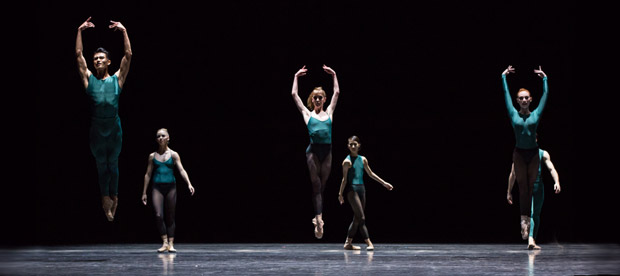
© Amitava Sarkar. (Click image for larger version)
San Francisco Ballet, Pacific Northwest Ballet, Houston Ballet
Celebrate Forsythe: Pas/Parts 2016, The Vertiginous Thrill of Exactitude, Artifact Suite
★★★★✰
Los Angeles, Dorothy Chandler Pavilion
21 October 2016
www.sfballet.org
www.pnb.org
www.houstonballet.org
www.musiccenter.org
There are two stages in a person’s life: Before Artifact and After Artifact. William Forsythe’s 1984 masterwork detonated preconceptions of what ballet could be, or should be, in four acts of nonnarrative, post-classical choreography. The full-length work sent choreography in new directions but is rarely seen in its entirety, so a 40-minute abbreviation, Artifact Suite, created in 2004 for the Scottish Ballet, has spread the gospel of Artifact worldwide. Never has it been more explosive than in Houston Ballet’s interpretation, performed on the opening evening of Celebrate Forsythe, a triple-bill of the choreographer’s work performed at the Dorothy Chandler Pavilion.

© Amitava Sarkar. (Click image for larger version)
The weekend-long run marked the opening of the Glorya Kaufman Presents Dance at the Music Center season and the culmination of Fall for Forsythe, a monthlong festival of performances, workshops and exhibitions dedicated to the influential choreographer. The festival was shepherded primarily by Jodie Gates, a former member of Forsythe’s Ballet Frankfurt who is now vice-dean of the Glorya Kaufman School of Dance at the University of Southern California. Having returned to the States after 40 years based in Europe, the American-born Forsythe is now the artistic advisor of the school’s Chorographic Institute.
San Francisco Ballet opened the evening with the postmodern Pas/Parts 2016, an extensively revamped edition of a work Forsythe created on Paris Opera Ballet in 1999. SFB brought a full cast of soloists and marquee principals to Los Angeles: Sofiane Sylve (who danced Artifact as a teenage ballerina with Dutch National Ballet), set the tone with a sinuous solo over the electronic score by regular Forsythe collaborator Thom Willems; Dores André, Frances Chung, Carlo Di Lanno, Lorena Feijoo, Maria Kochetkova and Joseph Walsh entered and exited in a 37-minute enchainement of solos, duets, trios and ensembles. The highlight was a late duet between Walsh and recently minted soloist Julia Rowe; their muscular chemistry electrified the push-pull partnering.

© Erik Tomasson. (Click image for larger version)
Pas/Parts 2016 interweaves allegro bursts, fearsome extensions, taffy adagios. The extremes feel organic to these artists, both because they rank among the world’s best contemporary classicists and because they collaborated on the revisions. A hallmark of Forsythe is reinterpreting his own work with the dancers who perform it; he cultivates their creativity as much as his own, which is one of the reasons they adore him. In my review of the January 2016 premiere, I groused that the new Pas/Parts didn’t reflect the original POB movement. I take it back. Pas/Parts 2016 is not an artifact, it is dancers qua dancers, exultant in teetering on the edge of their mastery. Persnicketiness just gets in the way of experiencing it with them in the moment.
Pacific Northwest Ballet, based in Seattle, Washington, emphasized joy over thrills in The Vertiginous Thrill of Exactitude, a fusillade of classical technique made to the allegro molto vivace form Schubert’s Symphony No. 9 in C Major. The five dancers – principals dancers Carrie Imler, Benjamin Griffiths and Jonathan Porretta, and soloists Leta Biasucci and Margaret Mullin – enunciated the torrential steps with vibrant clarity and luscious port de bras.
Griffiths lit up the stage with his petit allegro, Biasucci with her speed, and they amplified each other’s momentum in their duet. The radiant cast made the nearly impossible look like good fun, but on the whole they seemed to stay within a comfort zone of control; the effect was more exacting than vertiginous.
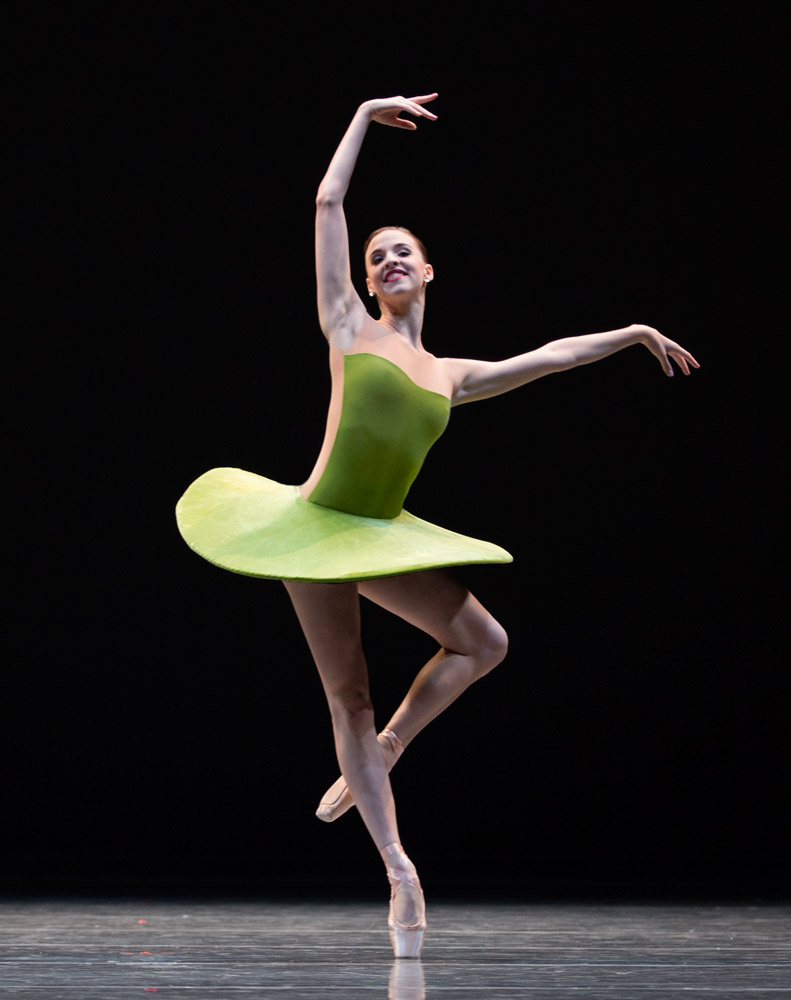
© Angela Sterling. (Click image for larger version)
In the end, the night belonged to Houston Ballet in Artifact Suite. Divided into halves, the work begins with pas de deux sequences framed by a 30-member corps and set to the Chaconne from J. S. Bach’s Partita No. 2 in D Minor (a recorded version by Nathan Milstein), punctuated by a curtain that rises and falls, peepshow style, on changing tableaux. The second half is a leviathan ensemble suite performed to Eva Crossman-Hecht’s Chaconne piano improvisations (played live and gloriously by Margot Kazimirska).
The movement is reverently technical yet hedonistically liberated, with balances pushed far beyond the secant, torqued épaulement, semaphore arm gestures and soaring leaps, punctuated with rhythmic clapping cued by corps member Bridget Kuhns as the Other Person, a vestigial ringleader carried over from the full-length Artifact. The phrases pursue tangent after tangent, but always return to tendu croisé or efface, and circling arms that forever wind back to fourth position (a motif echoed in Pas/Parts 2016).
In the Suite’s inverted and unexpected pas de deux, principals Karina Gonzalez with Ian Casady, and soloists Jessica Collado with Chun Wai Chan, deployed soft phrasing and seemed to tilt on some vaporous fulcrum. And while the 36-member ensemble ranged from corps dancers to principals, their mutual passion – not too strong a word here – rendered the distinctions invisible. Three by three, five by five, in fugues of half a dozen different sequences unfurling at once, they caught us in the tractor-beam of their energy. You could avert your eyes only by force; it pained me to take notes.
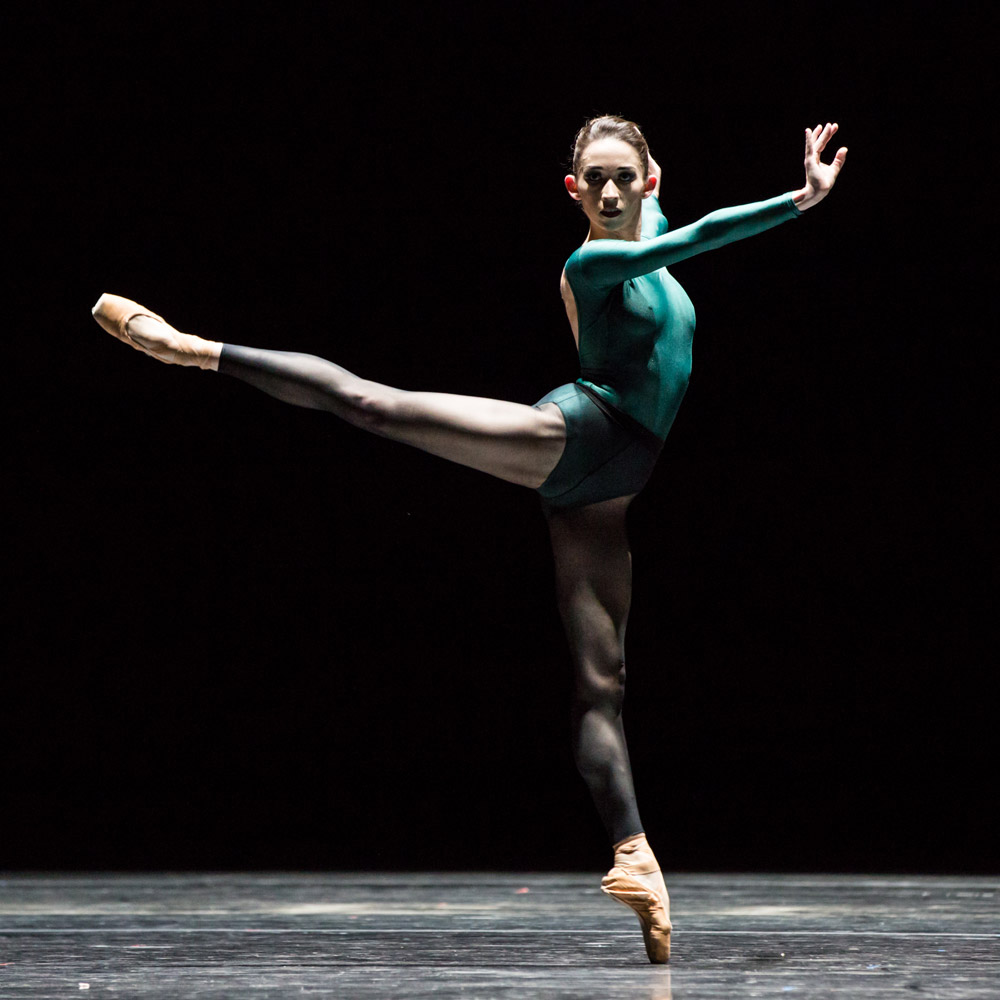
© Amitava Sarkar. (Click image for larger version)
Houston’s standing ovation became a hero’s welcome when Forsythe walked onstage to take bows with all three companies together. He slinked back into the wings but the applause went on and on, because life after Artifact is good.












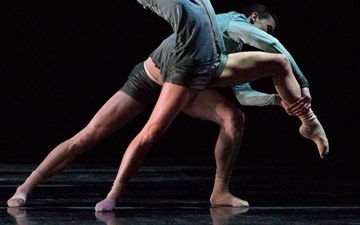
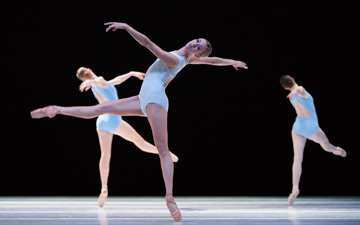
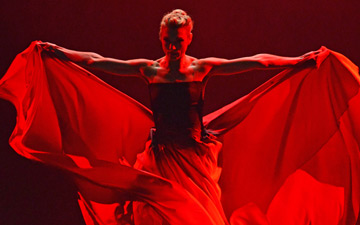

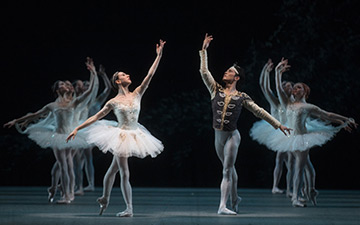
You must be logged in to post a comment.